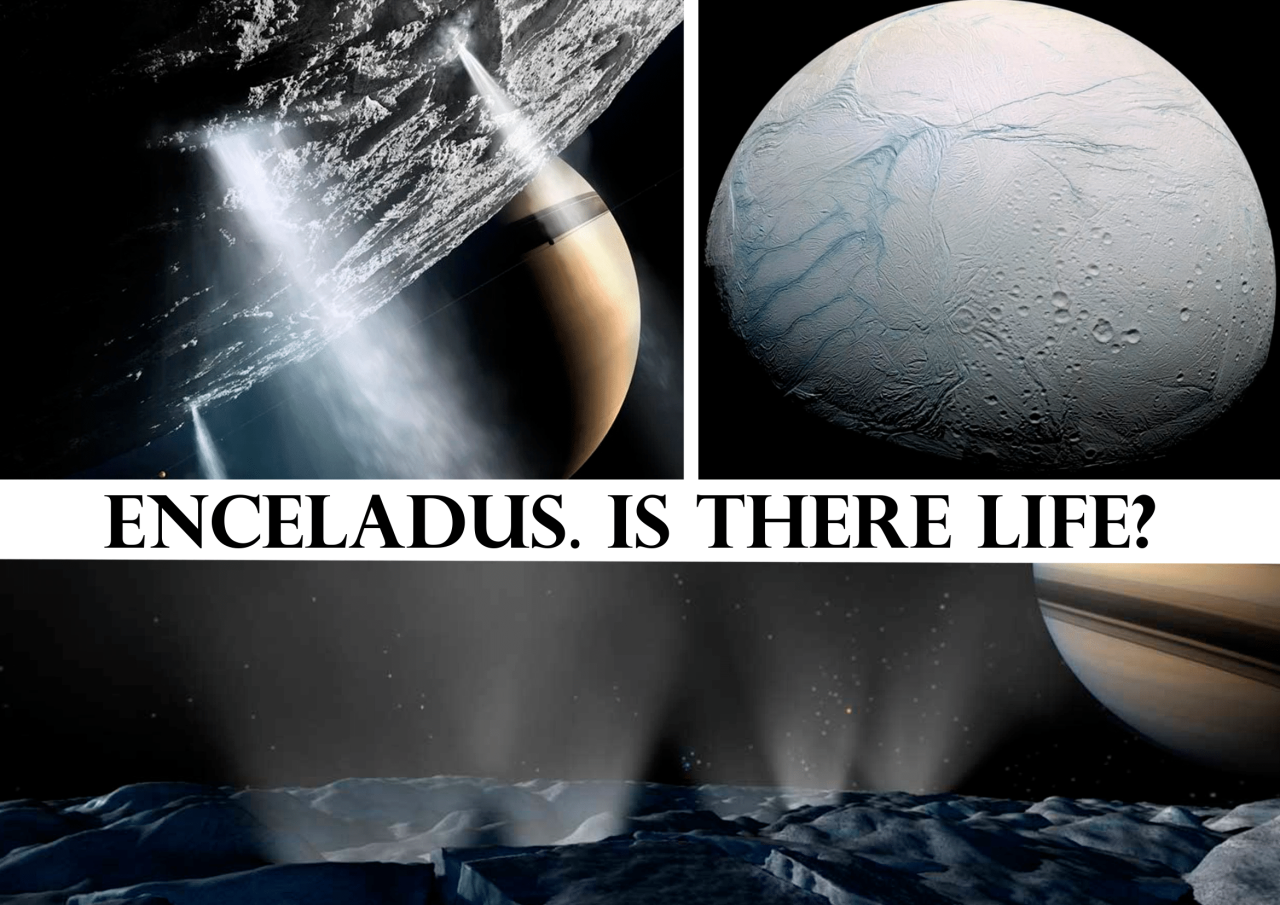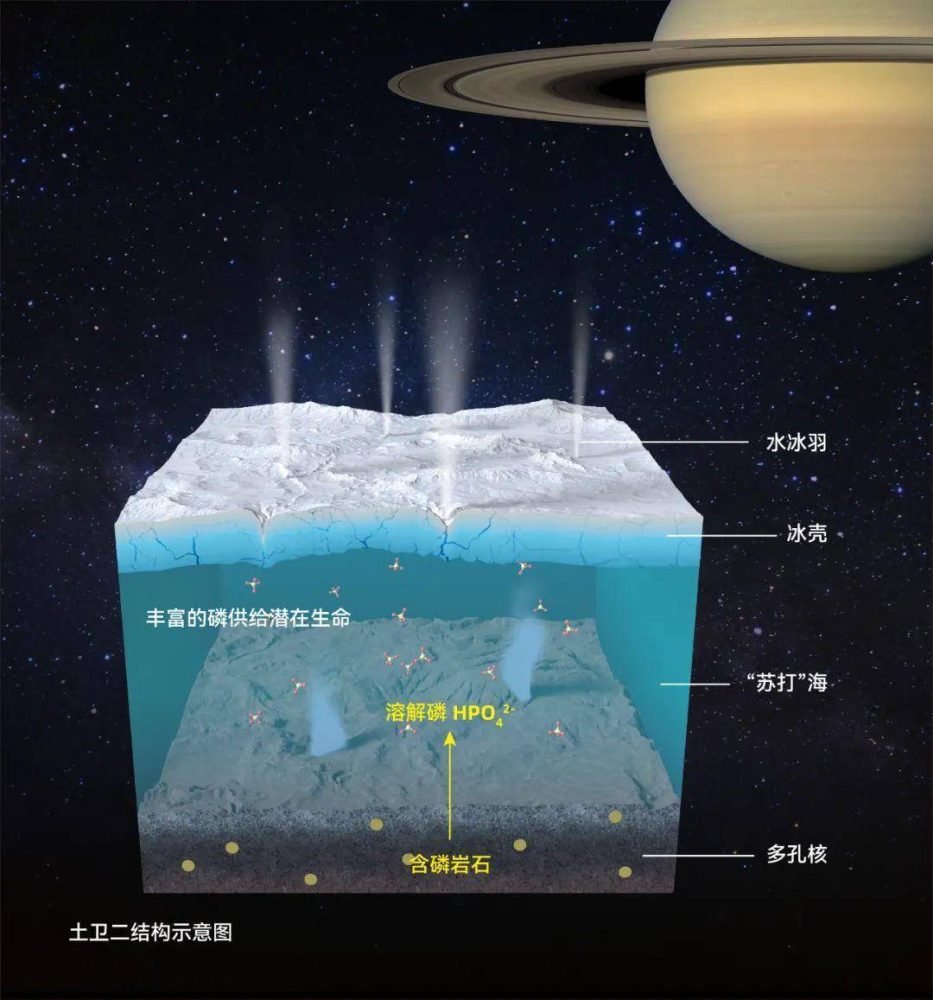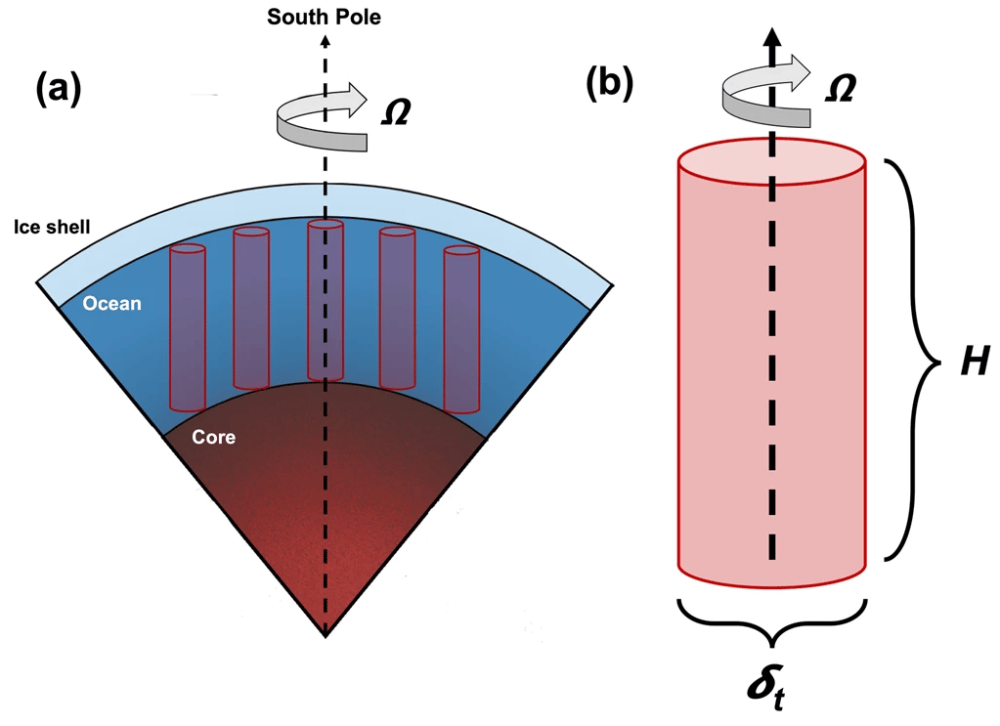On October 7, 2022, the Xinhua news Agency published an article by Li Dongbiao about the probability of the existence of life on the moon of the planet Saturn — Enceladus.

The authors cite arguments in favor of this theory from a study by Hao Zik and other employees of the Chinese University of Science and Technology. In particular, the main thesis is the fact that the space object is covered with a thick ice shell, and under it there is an ocean that can be rich in dissolved phosphates. They, in turn, can contribute to the emergence and reproduction of potential microorganisms. Our team became interested in this issue and decided to check the facts discussed in the article.
Thus, an international research group led by Hao Jihua has created an innovative model of the interaction of seawater and rocks to simulate the chemical environment of seawater on Enceladus.
At the same time, phosphorus-containing rocks in the core of Enceladus need only about 100,000 years to dissolve a lot of phosphorus in the sea. At the same time, the Enceladus Ocean has existed for more than 100 million years, so it is assumed that it is already rich in phosphorus.
At the same time, in the article “An abundance of phosphorus is expected for possible life in the Enceladus Ocean”, published in the journal Proceedings of the National Academy of Sciences August 9, 2022, Hao Jihua, Christopher Klein and other scientists note that the possibility of life development is strongly influenced by the unidentified presence of phosphorus.
We get that an aqueous solution of phosphate exists mainly in the form of orthophosphate (for example, HPO42–) and the total amount of inorganic phosphorus can reach from 10-7 to 10-2 mol / kg H2O, which generally increases due to a lower value of the hydrogen index (pH) and a higher concentration of dissolved carbon dioxide (CO2), but in particular, it depends on dissolved ammonia and silicon dioxide
the material says.
At the same time, the indicators are much higher than 10-10 mol/kg H2O, according to previous calculations, and are approximately equal to or exceed ~10-6 mol/ kg H2O in seawater on Earth at present. The high concentration of phosphorus in the ocean is explained by the fact that there is also a lot of (hydro) in the ocean carbonates. They allow phosphates to accumulate, reducing the concentrations of polyvalent cations and forming carbonate minerals. Based on kinetic modeling of the dissolution of phosphate minerals, it can be assumed that phosphorus is rapidly ejected to the ocean floor, thereby forming a chondrite stone core.
The total amount of inorganic phosphorus can reach from 10-7 to 10-2 mol/kg of H2O, which generally increases due to a lower value of the hydrogen index (pH) and a higher concentration of dissolved carbon dioxide (CO2), but also depends on dissolved ammonia and silicon dioxide. The indicators are much higher than 10-10 mol/ kg H2O, according to previous calculations, and are approximately equal to or exceed ~10-6 mol/ kg H2O in seawater on Earth at present
the scientists write.
The results obtained are additional evidence that there are habitable conditions in the ocean.
Scientific portal phys.org. on September 19, 2022 posted an article “Researcher helps identify new evidence for habitability in the ocean of Saturn’s moon Enceladus”, whose authors referred to the research of Christopher Glein from the Southwest Research Institute (USA). The scientist and his team discovered new evidence of the presence of phosphorus on Enceladus.
Thus, journalists write that the Cassini spacecraft discovered Enceladus’ underground liquid water and analyzed samples when columns of ice grains and water vapor burst into space from cracks on the icy surface of Saturn’s moon.
Although the biologically important element phosphorus has yet to be identified directly, our team has found evidence of its presence in the ocean under the icy crust of Enceladus
the material says.
Dr. Christopher Glenn’s team performed thermodynamic and kinetic modeling simulating phosphorus geochemistry based on Cassini data on the ocean-seabed system on Enceladus. In the course of their research, scientists have developed a detailed geochemical model of how seabed minerals dissolve in Enceladus’ ocean, and predicted that phosphate minerals are sufficiently soluble.
What this means for astrobiology is that we can be more confident than before that the Enceladus ocean is habitable
the journalists write.
This point of view is supported by a popular science website sciencenews.org. In an article dated December 16, 2022, journalist Nick Ogasa refers to planetary scientist Yasuhito Sekine, who spoke at the fall meeting of the American Geophysical Union on December 14, 2022.He, relying on data from the same Cassini satellite, stated that at the bottom of Enceladus’ subsurface ocean, phosphate may form as a result of reactions between seawater and a phosphate-containing mineral called apatite, before being ejected through geysers into space. Apatite is often found in carbonaceous chondrites, a primitive material for building planets.
According to Sekine, many other icy oceanic worlds may also contain apatite. Similarly, they too could tolerate high levels of phosphate in their oceans. This wealth could be a boon for any potential alien organisms.
At the same time, Emily Hawkins, associate professor at Loyola Marymount University, and a group of researchers in an article in the journal Nature dated February 10, 2023, give other arguments in favor of the possibility of life on Enceladus. In particular, they talk about a geological feature on Saturn’s moon. This model was presented by Hawkins and scientists from the University of California at Los Angeles, the University of Texas at Austin and NASA’s Jet Propulsion Laboratory. It clearly shows how currents can capture and transport particles of the subsurface ocean.
The researchers explained that Enceladus’ active geology is fueled by tidal forces as it orbits Saturn in an eccentric trajectory, being attracted and compressed by gravity. This tide-induced deformation causes friction in both the ice shell and the deep rocky core; with enough friction, the ocean floor can heat up, causing convection.
It’s like boiling a pot on the stove. Tidal friction adds heat to the ocean and causes updrafts of warm water,” said planetary scientist Ashley Schoenfeld, lead author of the paper and a graduate student at the University of California, Los Angeles. “Our study shows that these flows are strong enough to lift materials from the seabed and transfer them to the ice shell that separates the ocean from the vacuum of space.
As noted above, on Earth, hydrothermal vents at the bottom of the ocean support rich deep-sea ecosystems. That is why evidence of a similar geological feature on Enceladus provides value for astrobiologists studying the possibility of life beyond Earth.
We also turned to an expert, associate professor of the Department of Mathematics and Mathematical Education of Mininsky University, Candidate of Physical and Mathematical Sciences Nikolai Lapin, a member of the Association of Teachers of Physics and Astronomy.
He expressed his point of view on this issue. According to him, everything we are trying to look for is based on the chemical elements and conditions already available on Earth. Our planet is located at such a distance from the Sun that it makes it possible for water to exist in a liquid state. This is the so-called “zone of life”. However, Enceladus can no longer boast of such a condition. At the same time, due to the mass of Saturn, there may be liquid water on its moons, as evidenced by geysers.
Part of the water flies into the open space due to insufficient gravity. This water forms one of Saturn’s rings. The other part of the water turns into snow. Light is reflected from the ice that covers the satellite, so Enceladus is the brightest satellite
the scientist notes.
At the same time, there is liquid water under the ice and it is warm, various chemical reactions occur in it and there is a set of chemical elements, but there is no electric current (flash), a necessary condition for the existence of life.
We can say that the set of chemical elements corresponds to the conditions of the origin of life, but it is not yet possible to definitively confirm this. However, again, while we do not know any other form of life other than carbon, we are looking for carbon life
the expert emphasizes.
At the same time, Enceladus, as such, has no atmosphere. It represents water (snow) that is sinking. The expert also draws attention to the fact that there is no gravity, which is an obstacle to the emergence of life.
Conclusion
It this way, the article presents one of the models, theory, hypothesis of the origin of life on Enceladus. And while the findings are promising, they are not definitive: more research is needed to determine the likelihood of life on Enceladus. Probably the most accurate way to determine this would be to send a research satellite there. Ultimately, the answer to this question will depend on our understanding of Enceladus’ conditions and whether they are suitable for the existence of life.
AUTHORS
© Daniel Buylov, Maya Salimgaraeva, Sabina Chumakova, Adelia Sitdikova,
Sabina Vagapova, Dia Chzhao.